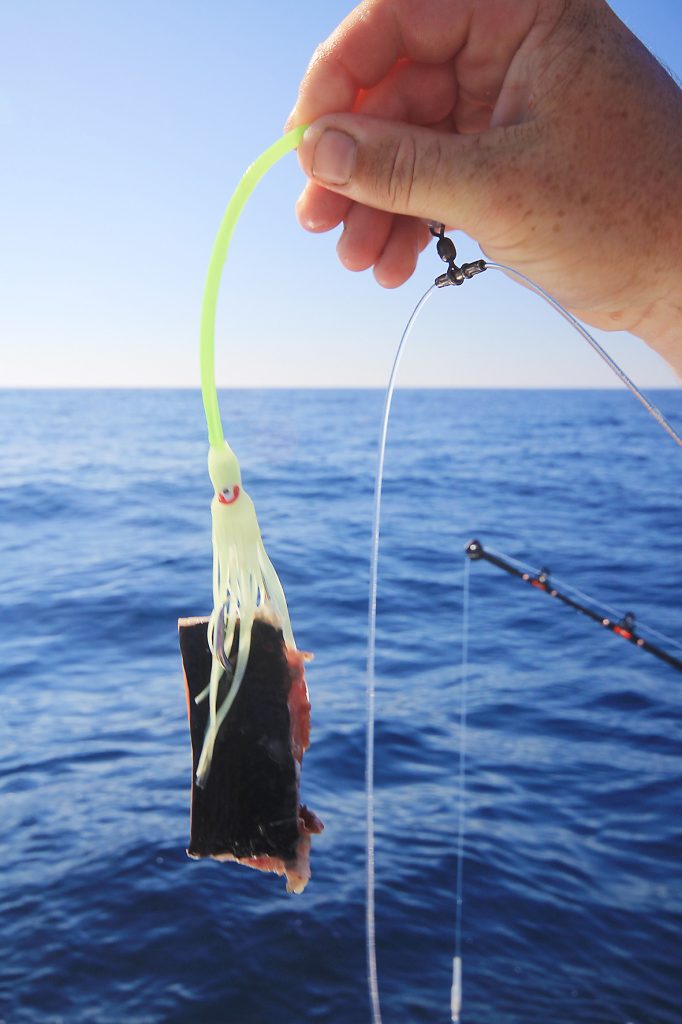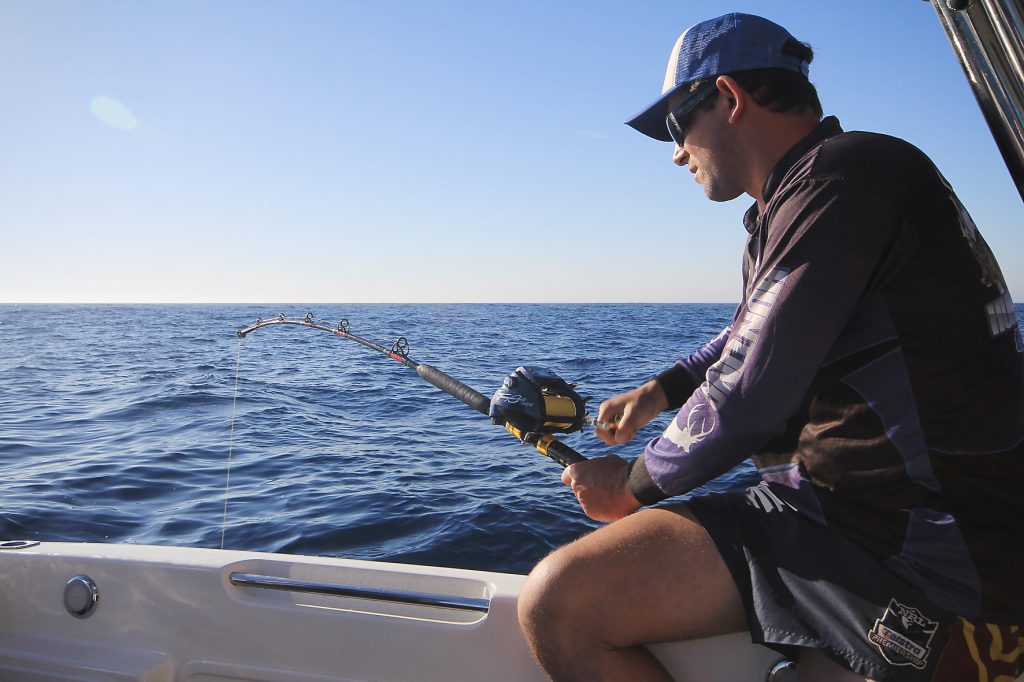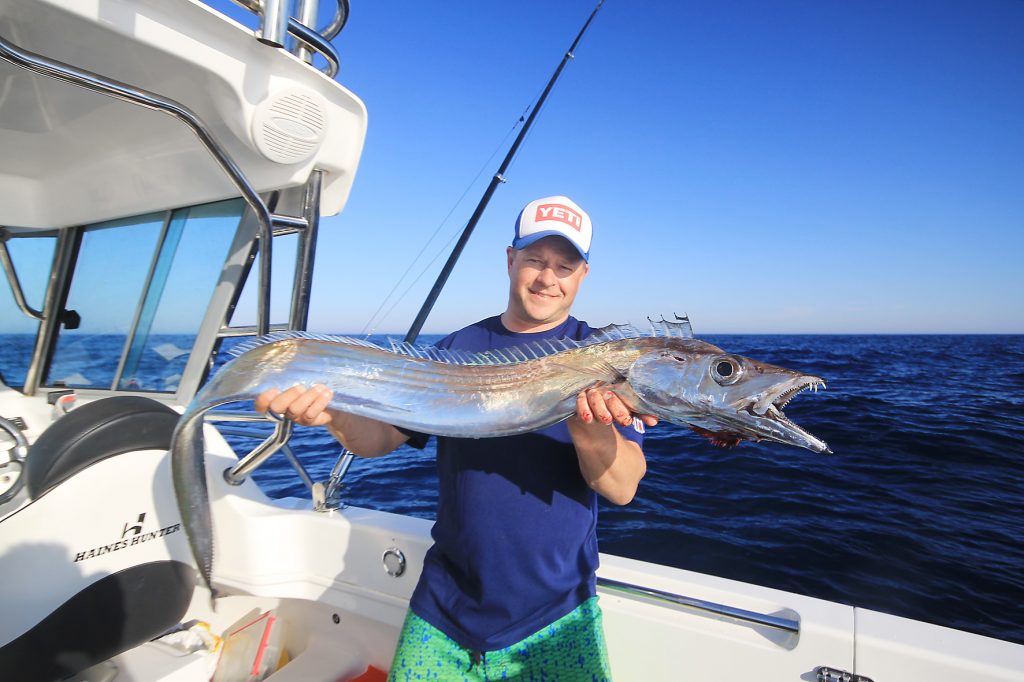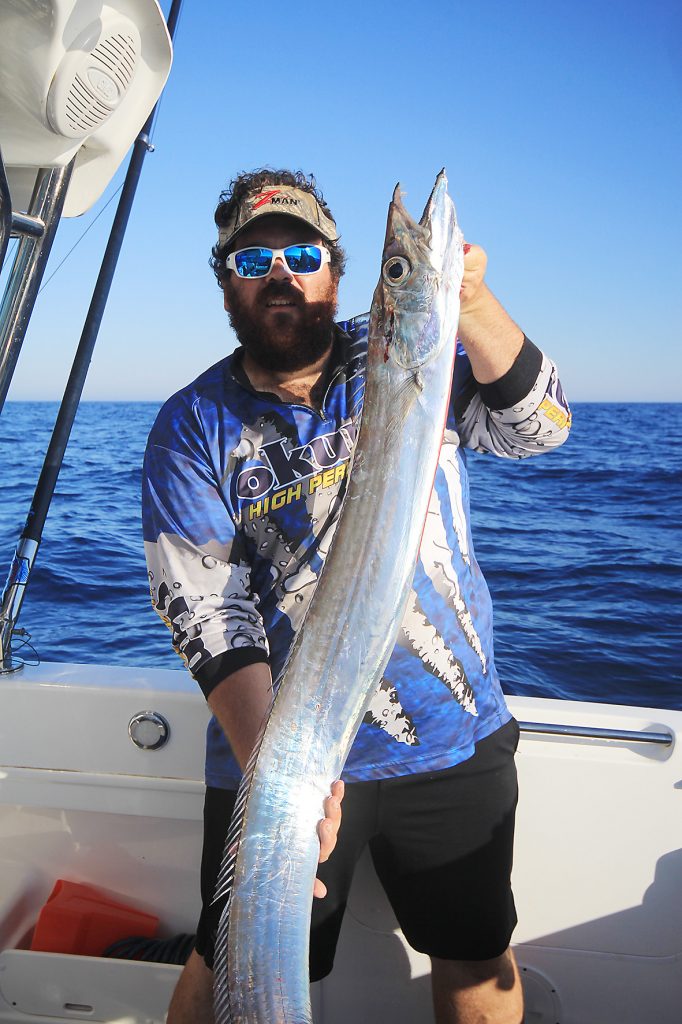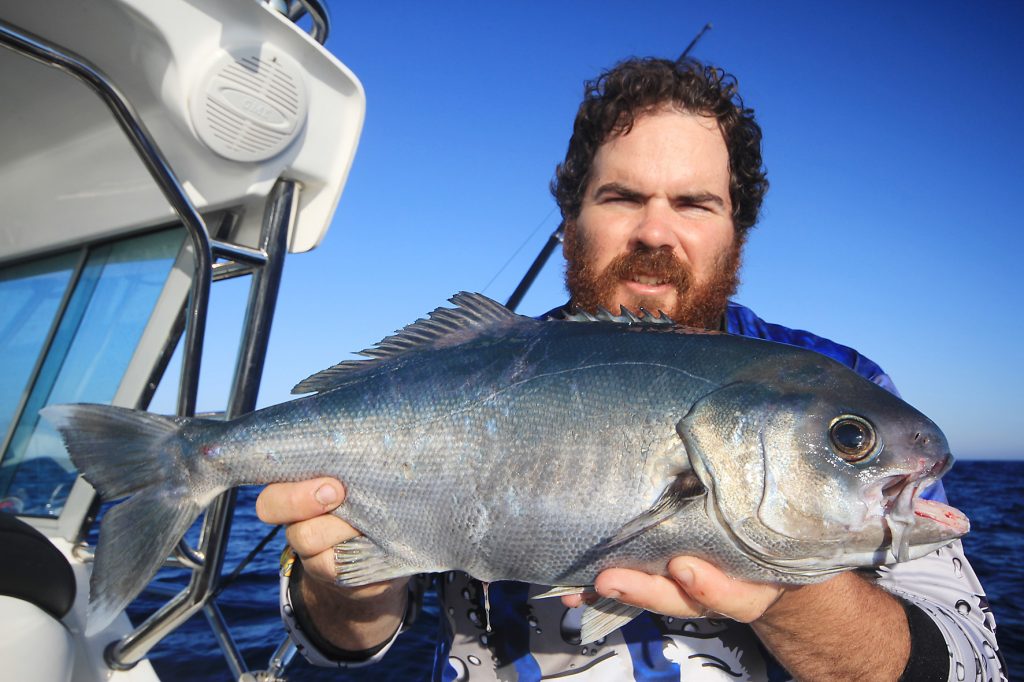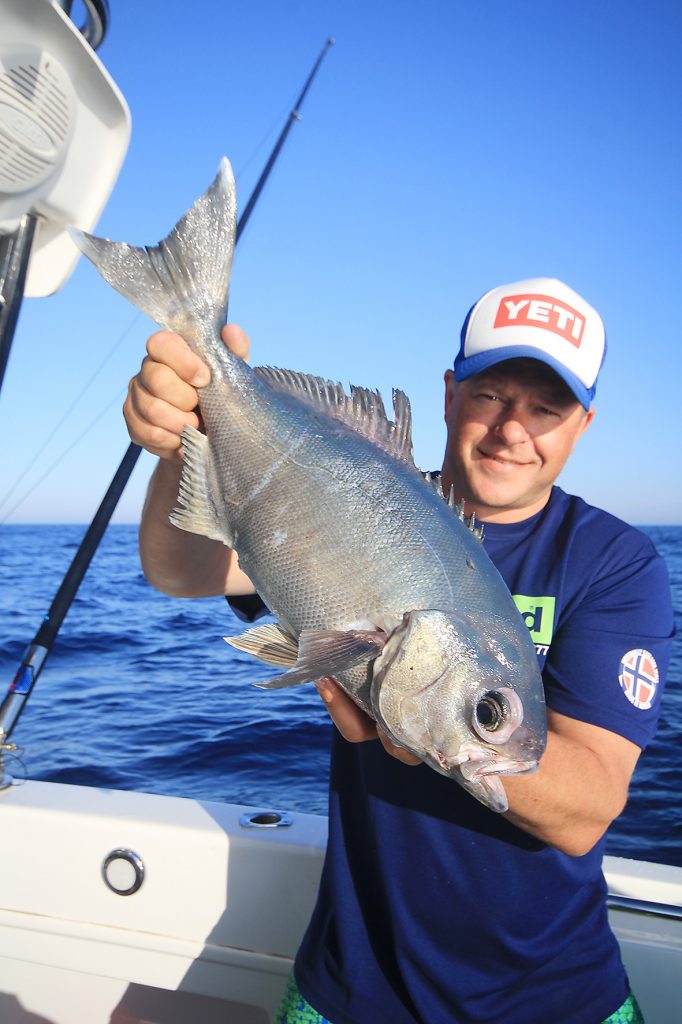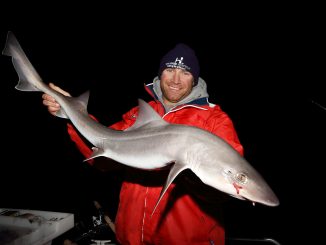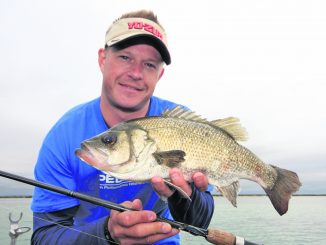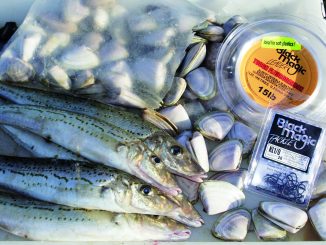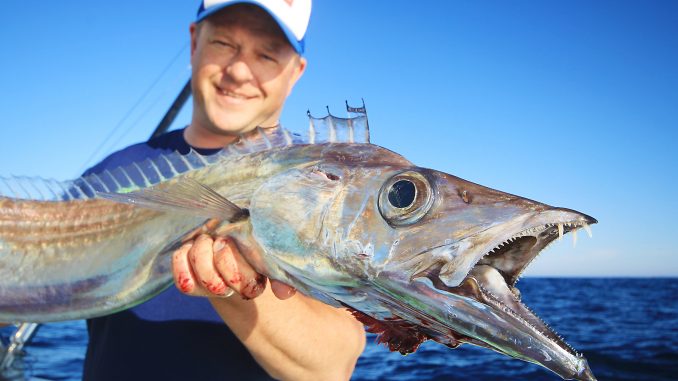
by Jarrod Day •
Over the past decade, the run of southern bluefin tuna along Victoria’s western coastline has certainly put some of the western coastal towns on the map. There is no doubting that the southern bluefin fishery is now world-class, with tuna of over 100kgs appearing annually.
Aside from tuna of that size, school tuna in the 10-30kg are now a year round option for anglers as we know, and as fun as they are to catch, on occasion, it is nice to explore other targetable species just to switch it up from time to time.
Being so close to the continental shelf, there are many different species worth targeting aside from tuna. Whiting, snapper, kingfish, sharks, calamari and plenty more delectable species are available in depths ranging 2-50m, however, it is way beyond this that anglers can catch some of the more favourable species the ocean has to offer!
EXPLORING THE DEEP
Along the West Coast, there certainly is a lot of water to explore, however by reading up a little on the variety of some of the species that are available to catch, you’ll also work out what depths they can be found at.
For instance, Tasmanian trumpeter are common and tend to be found in depths ranging 80-120m, while blue-eye, gemfish, knifejaw, ling, frost fish and a host of others can be caught in depths ranging 200-500m.
Exploring the deep is certainly exciting, as during any drop, you really never know what species you’re going to bring up next.
Although many people love to wrap their lips around a nice steak of fresh tuna, devouring a fillet from a blue-eye or gemfish is very hard to beat. Some say that flathead are the most tasty table fish around here, but once they try a fillet from a fish of the deep, I’d doubt they’d continue to repeat that statement.
WHERE DO YOU BEGIN
Fishing the deep really isn’t that hard, however you do need everything working in your favour. Of course, there is no way to anchor your boat to concentrate on one area, so drift fishing it your only option. Drifting allows you to cover a wide area, but you do need the weather in your favour, otherwise your baits will not reach the bottom.
In an ideal world, when fishing in 400m of water or so, a day when the wind is around the 5-10knot range with a 2m or less swell will allow a slow and constant drift, and even then, it pays to deploy a drogue or sea anchor to slow the drift down. Any higher and getting baits to the bottom can be extremely difficult, causing you to use more weight than necessary to get to the bottom.
Nearly all anglers have a GPS and or mapping unit on their boats these days, especially those who target tuna regularly, and it is the maps that can provide you with locations to head if you are going out blind without marks passed onto you by another angler.
Zooming in on the continental shelf using a GPS map will show you the seafloor contour as it drops off into the deep. At some points, the contour lines are spread wide apart while other really close together. The closer they are together, the steeper the bank decline. Blue-eye, ling, gemfish and a host of others tend to be found more regularly on the steep declines and providing you get your drift right to work along the edge maintaining a fairly consistent depth, you should be able to get a bite.
RIGGING UP
Getting a setup for deep sea fishing does require an entire new rod and reel, there’s no doubting that. However, if you have a mate on board that wants to try dropping the deep for his first time, you can always get him to do it by hand for a laugh.
On a serious note, dropping a bait in 400m of water is certainly no fun, which is the sole reason for using an electric reel. Electric reels make fishing the bottom much easier and although there is a small minority of anglers who say that using an electric reel isn’t fishing, watch them change their tune when they attempt to wind up a 5-10kg fish plus 1-3kg of sinker weight by hand!
Most electric reels these days can hold around 800-1200m of braid, and if you are going to spool one up, look no further than 80lb. You’ll also need a good rod too – something that can easily handle the pressure of constantly being buckled with that amount of weight.
While there are specially designed rods made for this fishing style, a 37kg bent butt game rod with customised swivel tip will make it easier, as well as prevent any line damage when bringing the fish up.
Making rigs is also a vital part of the setup and due to the depth, it is imperative that the rigs made can withstand a high amount of abrasion due to running over the seafloor. Rigs made from a length of 400lb main leader with a 200lb loop in the bottom for the sinker threaded onto it is a good start. The reason for the lighter poundage loop is so if you snag up, you only lose the sinker and not the entire rig.
On this rig, you can either crimp on a dropline swivel to attach your 400lb dropper containing a 12/0 – 16/0 tuna circle hook or instead of crimping to the main leader you can rig the hook to a 20cm length of 400lb leader with a shark clip attached. This enables the hook droppers to be clipped on and off the mainline.
Although you can lose rigs from time to time, you can always use pre-made rigs, which are quite inexpensive and are specifically made for this type of fishing.
Because of the depth fished, there’s barely any light down there for the fish to see, so on the top of the rig, it pays to clip on a deep sea light, as fish at this depth are quite inquisitive and a flashing light will attract their attention.
Lastly, you’ll need a good supply of sinkers as these can be easily lost. Sinker weight all depends on the drift speed caused by wind and current, and sinkers designed for this purpose are not easy to come by in tackle stores. You can tape 32oz snapper leads together, but they can be bulky and the sink rate can be impacted by the current pressure. Anglers who regularly deep drop tend to make their own by pouring lead into a thin cylindrical shape in weights of 1, 1.5, 2, 2.5 and 3kg.
Go deeper!
While it is a lot of fun to head off the West Coast in search of tuna, when the conditions are flat, more often than not the tuna are finicky and hard to get on the bite. It’s days like these that having a back up plan to go deep dropping can turn a slow tuna bite into a crazy deep dropping session!

